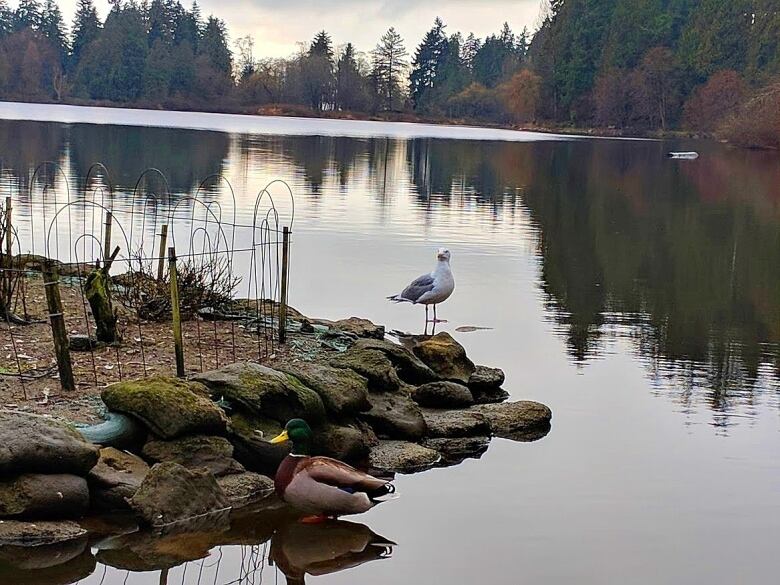Winter wanderings: how Stanley Park wildlife survive the cold
It's the season to spot an otter

On the southern shore of Lost Lagoon in Stanley Park, a family of otters has made a huge change.
The park is an oasis of nature inVancouver, which groups like the Stanley Park Ecological Society are constantly studying, monitoring and preserving.
Normally nocturnal, the park's otters have made a switch and are now embracing daytime antics and activities.It'sone of the many transformations wild animalsmakeevery year in the park to survive the winter.
"The landscape of Stanley Park in the winter really changes," saidCelina Starnes, the public education and outreach manager with the society.
"The otters need so much food. It's colder. Food is less available. They actually start coming out more in the day."
The winter survival tactics of otters and all the park's creatures are the subject of a tour, Sunday, hosted by the society called Extreme Survivors: Winter Wildlife.
It's the best season to spot an otter, and also an excellent timeto appreciate bird feet.

"When I first took a look at some of these water birds," said Starnes. "I was thinking'gosh, I would not want to have my feet in that cold water, that does not look good.'"
But as tour participantswill learn, the waterfowl that steadfastly standfor hours at a time in the park's icycreeks and ponds are just fine.
For example,seagulls' feetare perfectly adapted for winter wandering.
Blood flow is restricted to the feet to begin with, but truly chilly watershowcases thefeet's remarkable ability to warm cold blood through a unique circulation system.
The almost-freezingblood coming from the feet passes by blood vessels that are very warm as it travels up the bird's body. The blood is then warmed before travelling to the heart, wings and brain.
"This is a little spa trip for these guys," said Starnes, laughing.
Some of the marvellous winter adaptations still perplex the animal scientist.
The park's tiny chickadees are a species that storeall their food for the winter ahead of time. But in order to remember where their food is hidden, the birds' brainsactually grow larger.
"This is wild.Their adaptation for the winter has brain scientists boggled," said Starnes.
The chickadee brain increases in weight during the winter and then decreasesin spring.
TheExtreme Survivors: Winter Wildlife tour begins at 10 a.m., Feb. 11.
With files from Rohit Joseph and On the Coast












_(720p).jpg)


 OFFICIAL HD MUSIC VIDEO.jpg)
.jpg)



























































































